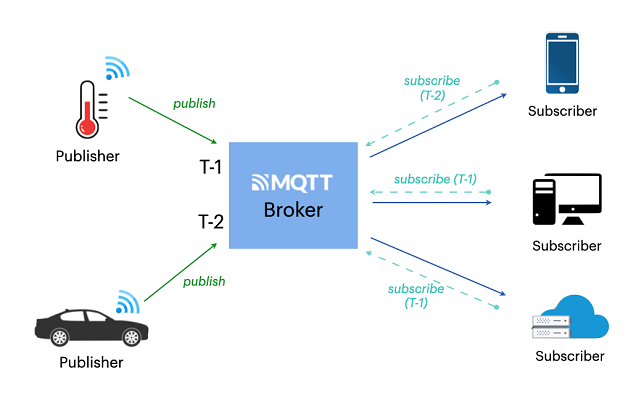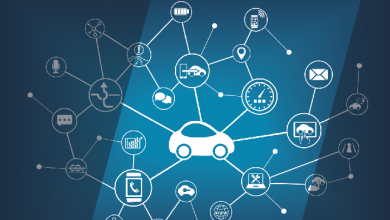M2M IoT Solutions

Are M2M and IoT the same?
Machine-to-Machine (M2M) and Internet of Things (IoT) in common parlance are used interchangeably. Both M2M and IoT can handle data acquisition and automation. However, traditionally M2M was not connected to the internet and dealt with non IoT protocols while IoT mostly dealt with IP protocols and involved the cloud.
M2M refers to interactions between devices where one device consumes the data generated by another device for making decisions and is often closed loop and serves one specific application. Examples of M2M communication in this case would be vending machines sending out inventory information or ATM machines getting authorization to dispense cash.
While M2M draws the foundations of connectivity, it’s more focussed on machine to machine communication from where IoT acts like a successor, picks up from there and adds people dimension and makes it more interactive and collaborative that applies to consumers and enterprises. IoT examples can be smart home automation, fitness trackers, industrial automation, sensors, connected vehicles etc.
M2M devices adhere to the same protocol and deal with a smaller scale, while IoT platforms deal with larger scale, multiple protocols and endless integrations. It appears M2M is a subset of IoT, but it’s helpful to think of both M2M and IoT as separate layers. The primary purpose of IoT is to create an intelligent environment for the users. IoT steps it up by integrating device and sensor data with big data, analytics, and other enterprise mobile applications which M2M rarely does.
Below are few factors that can help you decide if your current project requires M2M or IoT
- Scale of the project: Unlike M2M, IoT deals with higher scale.
- Intelligence: IoT data is shared between applications and it leans more towards utilizing the data for decision making. M2M data is shared between the machines for communication and has a certain degree of decision making but more from a tracking and observation point of view.
- Data Delivery: In M2M, devices talk to each other and can be connected through a network while in IoT, it is dependent on the IP protocol.
- Business type: M2M deals mostly with B2B, while IoT deals with both B2B and B2C.
M2M and IoT protocols
We need to understand that not all devices/sensors have the ability to connect to the cloud directly. Also, devices can be low powered. Further several sensors can work in tandem to solve a use case for e.g. water level, oxygen level and other sensors together are used to solve aquaculture use cases. Sensors or devices that are specialized for a purpose and that are low powered usually get connected to the cloud via a gateway. Communication between the devices/ sensors and the gateway can be over modbus, bluetooth, wifi, zigbee kind of protocols while the communication from gateway to the cloud can happen over MQTT, HTTP, COAP and TCP/IP protocols.
One of the foremost things in connectivity in M2M/ IoT is the need for supporting bidirectional abilities to cater to the wide range of use cases, for e.g remotely control the devices. HTTP does not bring real time bidirectional ability, but MQTT and TCP/IP brings bidirectional abilities inherently. The payload size in M2M/IoT is less but with a much higher frequency. IoT/M2M use cases demand a secure, bidirectional, lightweight, reliable and most importantly publish subscribe experience. MQTT is one such protocol.
MQTT : Message Queue Telemetry Transport (MQTT) is a publish-subscribe messaging protocol which resides on top of TCP/IP stack and is extremely lightweight, reliable and is designed to work in low bandwidth, high latency and unreliable environments.
Brief History
MQTT was invented in the late 1990s by Andy Stanford-Clark and Arlen Nipper to monitor the pipelines in SCADA in the Oil and Gas industry where there was a need for lightweight and quality service guarantee. Later in 2014, it was submitted and released as an OASIS standard and today we have multiple implementations and support in most of the popular programming languages.
Architecture
MQTT works with a Publish-Subscribe model, where the publisher and subscriber are loosely coupled unlike the traditional Client-Server model. The Publisher and the Subscribers do not have a direct physical connection and the messages are routed via a Broker.
MQTT is the choice
Smartphones, Wearables or Fitness devices (from the Consumer Electronics), Connected and Self Driving Vehicles (from Telematics and Mobility), Home Automation and Smart Offices (from Smart Infrastructure segment) and many more devices exchange data in real time and stay connected driving number of critical aspects of life and business. The very nature of MQTT, being an asynchronous protocol, decouples the sender and the receiver in terms of both storage and time. It keeps the message extremely light weight and ensures real time message transfer making it more efficient for mission critical systems. Thus MQTT becomes an excellent choice to unleash the power of connectivity across devices.
M2M and IoT solutions
Below are key modules or frameworks the IoT solution must support on the cloud side.
- Cloud Connectivity : This module must support a heterogeneous device ecosystem by offering one or more endpoints and connect the device to the cloud messaging broker or service . It typically supports HTTP, MQTT, TCP/IP and similar IP based protocols.
- Device Lifecycle : This includes onboarding of device, provisioning, configuration, monitoring and decommissioning of device. Provisioning includes registering, generating identity, managing credentials via API or offline as in the case of bulk provisioning.
- Device upgrades : This includes remotely updating the firmware and applications on the IoT devices. We can broadly categorize them as below.
- OTA Updates to Edge/Device : Here the device is connected to the Internet and receives the update via server.
- OTA updates via Gateway : Here the gateway receives the upgrade which in turn ensures the end device’s firmware is updated.
- Realtime tracking, monitoring & Alerts : Tracking the assets, monitoring the health and generating alerts in realtime is very important. This module brings the ability to monitor assets at any time of day or night and remotely through an asset tracking software tool. Alert generation typically involves a complex rules engine that can process incoming device data in realtime, act on the rules and generate an event.
- Analytics : It involves handling huge volumes of data from multiple sources and devices. The objective is to process, store and extract insights from the data. Further, analytics has to support both realtime and batch analytics. Reporting & Visualization and Decision making shall be the end goals of this module.
IoT Solution examples:
Consumer facing IoT solutions and Healthcare : You will see the highest number of devices in this category that any application has to deal with. For e.g. millions of water purifiers, millions of smart switches. Healthcare needs to address remote patient monitoring etc.
Mobility/Logistics : Here the scale of devices is slightly lesser than the previous category. E.g. could be FFT, connected & autonomous vehicle tracking, location and route management, supply chain Monitoring Systems and inventory tracking and warehousing solutions.
Edge computing IoT solutions : In these solutions, we see that processing of data which may be bulkier in nature like in the case of camera feed, etc happens at the edge. The processed output for e.g metadata generated from the computer vision algorithms is only sent to the cloud for further reporting, visualization and deeper analytics. This saves a lot of bandwidth and load on the network. E.g. could be improving the worker safety in a factory environment.
Energy and Utility: In the utility solutions, the device might be inside a local wifi or bluetooth network and then connected to the cloud via a gateway. Smart energy metering solutions need to support both pull (based on demand) and push use cases and support bidirectional protocols like TCP/IP and MQTT.
Alternate Energy : Here the solutions deal with EV ecosystem, smart EV batteries, EV charging stations and end goals is to provide a sustainable platform.
Agritech : IoT solutions in this space deals with Optimizing usage of water, energy, land. Agri IoT is a very vast use case as it can employ technology, soil and crop sensors, aerial drone monitoring and farm mapping futuristic robot pollinators, camera sensors and computer vision,GPS and machine learning to enable precision farming capabilities.
Factors affecting the solution cost
- Number of devices
- Payload size and how frequently data is pushed
- How long the data is stored on the cloud.
Today’s Solution category
- Data acquisition only : Focus on acquiring the data and offer pub sub architecture supporting high scale.. E.g. HiveMq, VerneMq, Akiro messaging core.
- Hyper pub sub : They not only facilitate data acquisition but also allow you to integrate or store data into databases, cloud services etc. E.g. Solace offers hyper pub sub solutions.
- IoT Platforms and solutions : E.g. AWS IoT core and Azure IoT Hub offer PaaS/SaaS capabilities, still a lot has to be stitched to arrive at an end solution. While Ayla networks kind of companies offer specific platform solutions.
- Low code/No code platforms : Losant and Akiro can be mentioned here, the strength lies in a wide variety of workflows and capabilities using which the customers can quickly build customer solutions.
Nextgen IoT Challenges
- With 5G huge data is generated
- That demands a scalable and Reliable IoT messaging and unified low code platform
- Handle ~10X the current scale
- There is a need for convergence of AI, 5G and IoT
- The next big investment in IoT shall be hybrid cloud systems which are both data centric and action centric at internet scale.
Author:

Srikanth G N
CoFounder & CEO
Akiro IO Inc
A product innovator turned into a serial entrepreneur and at the helm of multiple businesses with a focus on IoT & connectivity domains. Has a strong cross functional background across sales, product, technology and business with a rich experience of 19 years in the field of distributed systems, cloud solutions, Mobile platforms and embedded applications.
Published in Telematics Wire


